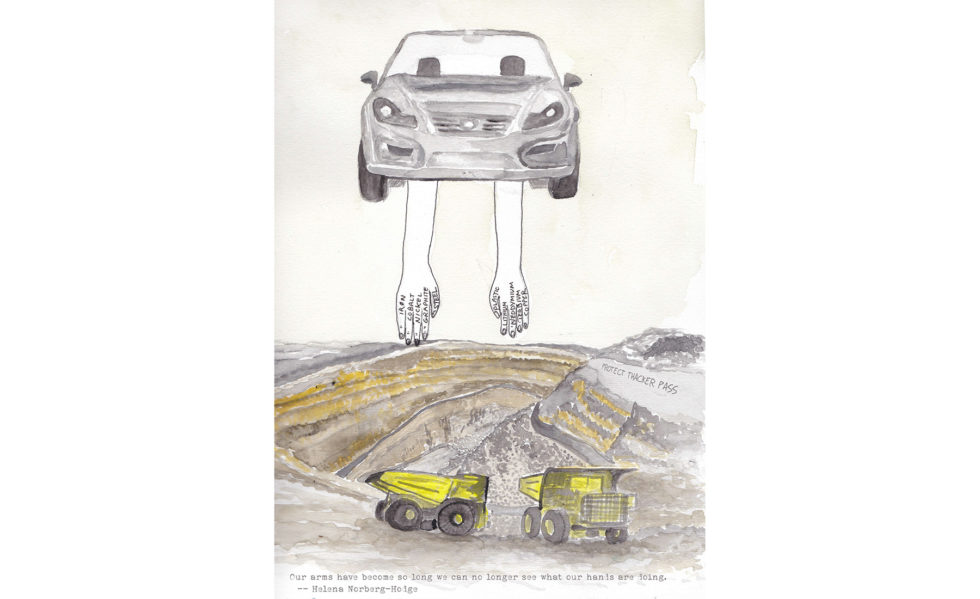
by DGR News Service | Feb 13, 2021 | Biodiversity & Habitat Destruction, Strategy & Analysis, The Problem: Civilization, Women & Radical Feminism
In this two part article Sarah describes her experiences of direct action, of insight into the harm caused to mother earth and offers the reader sharp analysis regarding the dominant culture. The second part will be published on the 14th February 2021
Featured image by Elisabeth Robson
My friend Tyler told me he was heading to Minnesota to join Indigenous Water Protectors protesting an oil Pipeline. I felt sad as I could not go. Tyler and I spent 4 months at Standing Rock. The Indigenous led resistance was strong, aiming to protect the sacred from the onslaught of destruction.
I took to Facebook to ask if anyone could go in my place. No one has volunteered (so far). I caught wind of another resistance camp. On January 15th, activists Max Wilbert and Will Falk stationed themselves on public land at Thacker Pass, Nevada, an area that is part of the Great Basin (the largest watershed in North America, spanning much of Nevada and into parts of Utah, Oregon, California, Idaho, Wyoming, and Mexico).
I always say that the alien invasion is already here because we live like homesick aliens visiting and trashing a foreign Planet with no respect for the local customs, not realizing that Earth is our estranged motherland!
For today’s installment of ‘Know the Goddamn Planet You Live On’
In a closed endorheic watershed, such as The Great Basin, water is retained within the area with no water flowing out to other external bodies of water, such as rivers and oceans. Instead the water drains to form seasonal and permanent lakes, ponds and swamps, and relies primarily on evaporation to keep moisture balance.
Max and Will are camped in Thacker Pass to protest the Lithium America’s right to develop a huge Lithium mine. Lithium is a lightweight metal used in the industrial manufacturing of everything from cell phones and laptop batteries to ceramics to high tech military equipment to prescription drugs. The Lithium stores at Thacker Pass, if mined, will mainly be used for making batteries for electric cars, all part of the plan to usher in the transition away from fossil fuels to ‘green energy’.
“Well what’s wrong with that?” you may ask, “Aren’t electric vehicles better for the environment?” “Better for the environment” may be a euphemism for “slightly less horrifically devastating for life on Earth but also may have unknown consequences that could end up being worse for the environment than the original thing that was supposed to be the worst thing ever”. THAT is hard to brand, so just stamp “SUSTAINABLE”!
It may be possible for one woman’s experience of rape to not be as horrific as another woman’s but it is still rape. The U.N. pass an international law saying nuclear weapons are illegal. The majority of nations sign up, but the nine countries known to have nuclear warheads of course did not. The U.S. and Russia are roughly tied with having the most weapons, somewhere around 125,000 between them. The other 7 countries with nuclear weapons have less than 2000 weapons between them. In any case, a small fraction of these weapons are enough to destroy all life on earth.
It is estimated that the amount of Life lost due to Industrial Civilization will already take Mother Earth millions of years to restore. The current trajectory due to industrial civilization could result in life being unable to be restored to full health.
In his article Activists Occupy Site of Proposed Lithium Mine in Nevada, Kollibri terre Sonnenblume writes that this Lithium mine….
“….would impact nearly 5700 acres—close to nine square miles—and which would include a giant open pit mine over two square miles in size, a sulfuric acid processing plant, and piles of tailings. The operation would use 850 million gallons of water annually and 26,000 gallons of diesel fuel per day. The ecological damage in this delicate, slow-to-heal landscape would be permanent, at least on the human scale. At risk are a number of animal and plant species including the threatened Greater Sage Grouse, Pygmy Rabbits, the Lahontan Cutthroat Trout, a critically imperiled endemic snail species known as the King’s River Pyrg, old growth Big Sagebrush and Crosby’s Buckwheat, to name just those that are locally significant. Also present in the area are Golden Eagles, Pronghorn Antelope, and Bighorn Sheep.”
Sometimes you have to break eggs to make an omelet, right?
Right now all we have is a shit ton of broken eggs and no omelet, all for nothing! Well, except for making a handful of white men extraordinarily wealthy while they build their gigantic metal penises in the form of buildings and towers and missiles. In the process of breaking all these eggs we also broke many of the birds who were laying the eggs, the insects the birds relied on for food, the plants the insects eat, we broke the watersheds that fed the plants. We broke the water that fed the watersheds!!!!! That is right, people…we broke water!
We have been led to believe that when it comes to the environment being damaged the means justify the ends. We are approaching the end and I would challenge anyone to find even a crumb of justification. The “means” turned out to be pretty mean in the end.
I wonder how much longer anyone will be around to record these things?
As Mother Earth’s body is ravaged, we make scientific notes on how she reacts. I think it is safe to say at this point that record keeping is not enough of a motivation to make us stop the torture. We do not realize we’re in the throes of THE END mainly because a false sense of security, being generated by the artificial life support systems we are on. Those who benefit the least from securities are busy surviving. Those who DO have the luxury to think about it need to step up NOW. We cannot keep using fossil fuels to run artificial life support systems nor keep the machines going. The natural life support systems are being destroyed at an increasing rate for short term profit and unnecessary luxuries.
It is time to pull the plug on artificial life support systems and see what happens. The fact is, the plug will be pulled one way or another. If we pull the plug TOGETHER the transition may be smoother as everything collapses. It is likely, we probably won’t voluntarily pull the plug, so get ready for a world of pain…one that lots of people (and non-human beings) are already experiencing.
While at Standing Rock, part of me had to overlook the narrative that stopping these fossil fuel projects included replacing them with “green, sustainable, and/or renewable” energy. I happen to disagree with this Buckminster Fuller quote:
“You never change things by fighting the existing reality. To change something, build a new model that makes the existing model obsolete.”
This quote speaks to the kind of logic driving the push to replace fossil fuels with green energy. The logic says we have to keep using “low carbon” fuels like fracked gas and Nuclear energy as a way to “transition” to the “good, pure, guilt-free, rainbow-powered” fuels. We have bought the false premise that green energy will make fossil fuels obsolete by using a better DIFFERENT model.
The ‘new model’ is an illusion.
Green Energy is a different WAY to power the existing model. Mother Earth is shouting “I can’t breathe!” as the weight of Industrial Civilization’s knee digs into Her back. Switching to “renewables” will still leave us in the same situation. A system that extracts without replenishing, exploits, destroys, creates inequality and degrading human hierarchies. The same system that strengthens patriarchy and reinforces human supremacy over nature, promotes competition and conflict instead of cooperation and peace, that keeps us separated from Earth, from one another and ourselves. This system categorizes us as either master, consumer, or slave.
A sentiment like the Buckminster Fuller one can only come out of a culture that is disconnected from reality, from intuition and our ancestral wisdom. We are no longer standing on the shoulders of our ancestors. We are paving over and trampling on their unmarked graves.
Nature is the model that works!
All this fanfare over Biden returning to the Paris Climate Deal (PCD) can fuck off, it is “too little too late”. It will not be anywhere near enough to make a difference. It does not matter if we return to the Paris Agreement or not. We need to return to the agreement we used to have with Mother Earth! She gave us Life. We promise not to take more than we need. We offer respect, thanks and praise. We need to return to the systems that She set up, systems we arrogantly think we can control/improve. Systems humans have lived within for over 90% of our existence as a species.
We must come to understand that it is not the way that cars are powered that is the problem. Cars are the problem. There is no “sustainable” number of cars. There is no such thing as “good” gas mileage. The reality is that cars are killers. Car culture makes killers out of us. There is no way to live with killers. They must be stopped. Using non-renewable resources in the current infrastructure while we wait for a better solution means we pollute and kill the Earth. There is no “better” to be had within the context of industrial civilization.
Why bother if it’s over?
You only say that because you have been trained to look in all the wrong places for all the wrong points. The solutions being proposed by the system to “save the planet” are moot points. We have just been disconnected from the truth. The point is both painfully obvious and mysteriously elusive.
The point is Mountain Heather.
The point is Puffins.
The point is spiders using electricity to magically fly through the air!
The point is the whimsical Maui dolphin, the smallest Dolphin in the world who never hurt anyone but SOMEHOW there are only about 50 left due to “overfishing”.
The point is that when a tree falls in the forest, other trees keep the stump alive in a process scientists call hydraulic coupling.
We must let go of doing what’s “better” for the environment. What it needed is to completely and immediately stop ALL means of production that is not necessary. This may not happen if we keep believing in money. I remember once seeing this headline in the fake parody newspaper ‘The Onion’ that read:
‘U.S. Economy Grinds To Halt As Nation Realizes Money Just A Symbolic, Mutually Shared Illusion’
We are facing our own death and the death of countless other beings and still, we refuse to face the reality. As Terrence McKenna says,
“The problem is not to find the answer, it’s to face the answer.”
Electric and hybrid cars are not the solution to our dying world, this ‘solution’ is not addressing the root problem.
It reminds me of that old children’s book ‘There was an Old Lady Who Swallowed a Fly.’ Its grotesque imagery is a cautionary tale. To make even one more new car (electric or otherwise) at this point in the collapse of the biosphere is literally insane. The amount of resources, by-waste, and pollution involved in the PRODUCTION of a vehicle is so great that it will NEVER be able make up for the damage incurred by its production.
We must greatly reduce and then eliminate the need for cars by creating localization of every aspect of our lives. We must stop calling alternative sources of energy “renewables”! The lithium mine may result in the land needing hundreds of years to renew. I took some of these roadkill photos while walking from Ohio to the Gulf of Mexico in 2010 after the BP Oil Spill. The dead animals from my Roadkill photo album did not care if they were killed by 100% renewable energy instead of by gas guzzlers. Walking all day long for 3 months drastically altered my perception of time and space.
I remember reading somewhere how there were some Native American tribes that were very resistant to adopting Horse travel, which was not part of their culture until the Spanish brought horses to the American continent in the 16th century. These tribes strongly believed humans were not meant to travel that fast and doing so would propel our body forward while leaving our spirit behind resulting in a fractured state of being.
I felt this the first time I rode in a car after my long walk had finished. It felt dangerous, I adapted.
Something essential and elemental is missing in environmental activism culture.
I will admit that I am afraid that something might be on the verge of being lost forever. Taking action can be a good way to re-activate what is left of the magic of the natural world and that same magic within us. There are still humans left who are the guardians of that magic, but they are greatly outnumbered. Industrial Civilization is closing in on them by the day. It can’t just be about stopping bad things and bad people, like pipelines and presidents. Western Environmental activism needs to evolve past this. Max and Will are embarked on that next chapter of activism evolution. This evolution must be centered around a brutal obliterating honesty, so sharp that it cuts straight through the fat of hope and the tendons of delusion and muscles of bargaining. Right down to the bone.
If we do not break free from the mental and emotional prisons of Industrial Civilization, we will not be able to get past false diagnosis and solutions. Green New Deal is bogus. We need is a ‘Get Real Deal’. It’s truth telling time. We must admit we don’t always know what the truth is. I used to think solar panels and wind turbines were the answer until I learned more and the truth changed.
The final permits for this lithium mine were fast tracked by Trump before he left office in a way that is more difficult to reverse through presidential orders. It is unlikely Biden would stop it, he already has a “save the environment” token, due to his executive order to halt construction of the Keystone XL pipeline. This will serve as a powerful pacifier for liberals. To highlight this point: we have a MLK Day so we do not need a Malcolm X or a Fred Hampton Day. Plus we would not want to offer a radical view now, would we?
Biden is being lauded for stopping Keystone XL.
This culture greatly praises men for doing the t simplest things. I am aware the Biden administration has suspended new oil and gas leasing and drilling permits on U.S. lands and waters. But only for 60 days. Naomi Klein speaks of the tactic of “Shock and Awe” that the ruling elite uses as a means to wear us all down so we give up. The strategy of “Balk and Stall” (copyright, Sarah Baker) is where those in power make a big deal out of decreeing something to be bad to stall while they figure out how to get out of stopping the bad thing.
“FOR 60 DAYS” the permits will be suspended, says the Biden people. It is the fine print that we must see. The “Balk and Stall” I witnessed at Standing Rock, was impressive, after the Army Core of Engineers announced that the DAPL pipeline construction would have to stop until an environmental impact statement was conducted. The celebrations were so intoxicating that it was as if people could not see the continued construction. Similarly, Trump’s wall is still being built even though Biden said he would stop it! The Cleveland Indians announce they will consider changing the name of their team. I have a name for you: how about the Cleveland Colonizers. Their mascot can be a Smallpox infested Blanket.
I was going to post this essay on Inauguration Day but figured I’d wait until the tranquilizing effects of that patriotism packed lullaby for liberals started to wear off. I didn’t see the entire pageantry of that day, but what I did see was quite spew worthy. There was this overall sentiment of: “Shhhhhh, it’s ok, you just had a bad 4 year long nightmare but everything’s fine now, a Democrat is in charge again, so here’s a glass of water made from the joy filled tears of all the Latin American mothers who have been instantaneously reunited with their children at the border. Now let us get you tucked in so you can go back to sleep and dream about Impeachment hearings and Bernie memes.”
A longtime environmental activist, Sarah lives in Ohio US, she loves writing and refusing to mow her lawn. You can read her article published in the Washington Post here.
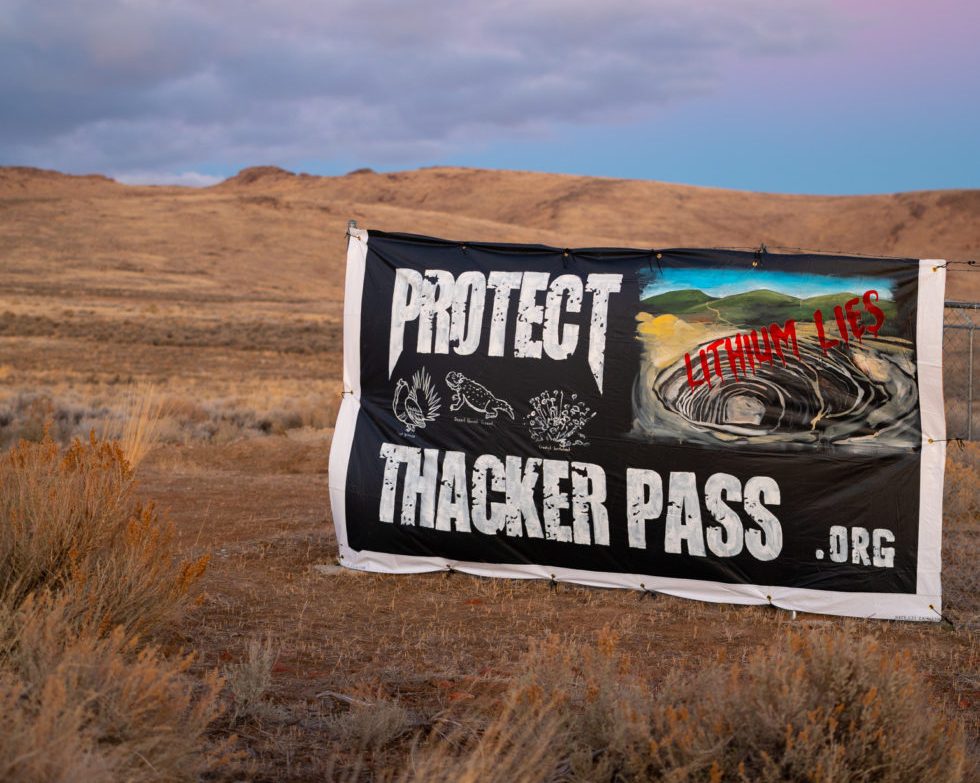
by DGR News Service | Feb 8, 2021 | Biodiversity & Habitat Destruction, Mining & Drilling, Obstruction & Occupation
First Voices Indigenous Radio host Tiokasin Ghosthorse interviewed Max Wilbert about the occupation of a proposed mine in northern Nevada. Lithium Americas corporation plans to rip open 5,000 acres of this land to extract lithium for consumer products.
You can listen to the full interview here.
First Voices Indigenous Radio is hosted by Tiokasin Ghosthorse is licensed under a Creative Commons Attribution-ShareAlike 3.0 Unreported License.
Based on a work at firstvoicesindigenousradio.org.
How wild can we get?
Message from Illahee Spirit Runners regional indigenous resistance:
Feb. 7. 2021
Campers are hiking and gathering around a fire. Some visit with Cody and Cloud the wolf brothers. I again sing the wolf song. I spoke to Blackfeet Holy Man on the phone. Blackfeet had the largest traditional home range in this side of Turtle Island even larger than the Paiute. I am Blackfeet on my father’s side. The Holy Man reminded me that our spiritual efforts to protect bears and wolves are becoming law in some places.
Change? Efforts to appease us? Progress? Crumbs.
We’re going all the way. Even beyond sovereignty. Decolonization.
I am “police” warrior society and we will have to ultimately enforce those Ideals that become law such as the American Indian Religious Freedom Act of 1978 because nobody else will enforce it. We may have to enforce indigenous law with the war club again one day. Will we get grizzly bears reintroduced into the northern cascades and other places?
How wild can we get?
Sitting here in what would have been wolf habitat before colonists made them extinct in 1953 watching the sun reflect brilliantly off the side of a mountain. Later I sing a peyote song. Focus. Healing. Waiting for the descendants of Chief Paulina the renegade chief to rise up again. But they were decimated to 38 members. Waiting for root and bannock people. Bison n rice people posted up a little longer. Tobacco is placed on the alter near the golden eagle carving.
A.I.M WE’RE STILL HERE! Golden Eagles > lithium mines. Until we have #RedPower and control over our own destinies on our own land we will have to watch everything we love die.
#protectthackerpass
#RightfulStewards
#RespectTheSacred
For more on the issue:
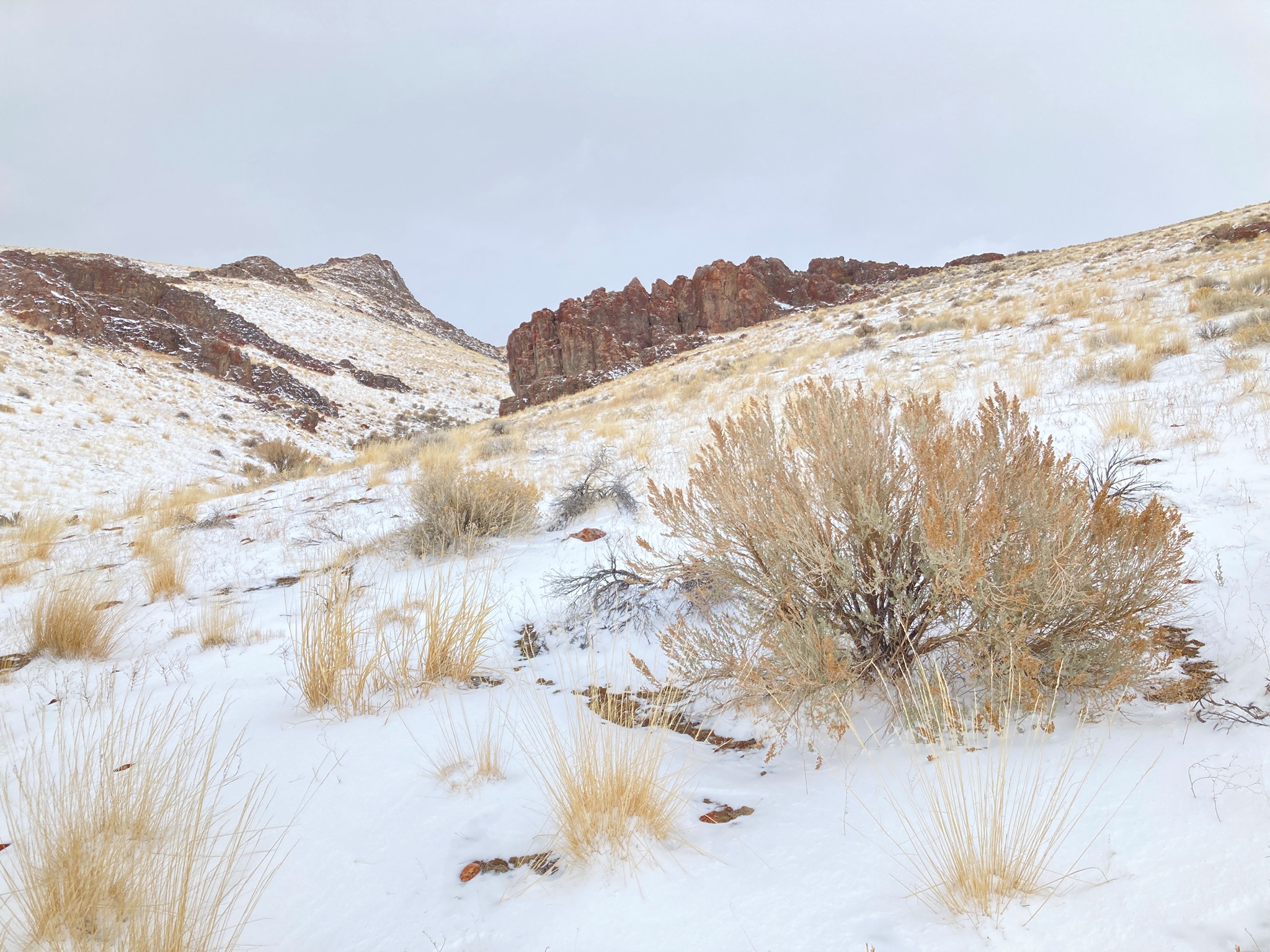
by DGR News Service | Feb 7, 2021 | Biodiversity & Habitat Destruction, Listening to the Land, Movement Building & Support
Sage Songs: Or What the Thacker Pass Rabbits Know About Music
by Will Falk
Rabbits taught me that each sagebrush has a unique voice. I often take long walks across the steppes in Thacker Pass. It’s not uncommon to spy a rabbit – with one floppy ear pointed one way and one another – peeking out of the tangles of sagebrush branches.
Today, as I wandered across the basin floor, I asked Thacker Pass aloud if she wanted to talk with me today. As the words were pulled from my mouth by a strong, cold north wind, a rabbit sprang from bushes at my feet, throwing snow up with his strong back legs. I followed his tracks as long as I could until they crossed an exposed patch of dirt where the sun had thinned the powder. I dropped to my hands and knees to study the dirt for the imprint of rabbit feet. The wind blew with a gust.
And, that’s when I heard them.
The sage surrounding me reached towards the sun to let the wind wash through their branches and leaves. I was transfixed by the fragrant melodies formed in the frictions between sage and wind. I do not know for how many measures I knelt there listening to the unmetered chorus sung in keys no human singer can achieve swirling around me.
Eventually, I opened my eyes to find myself looking at the rabbit’s tracks a few yards away. As I crawled along the rabbit’s path, different sections of ensemble rose and fell. I realized that each individual sagebrush with its own specific pattern of leaves, specific orientation to the wind, and specific structure of branches contributed its own sonic hues to the masterpiece.
As I leaned my head towards the heart of the closest sagebrush, the sunshine fell through the clouds and the sagebrush’s twisting limbs. I recognized the sun as the great conductor of this symphony. I saw how the sagebrush grew towards the falling photons while intentionally choosing the specific patterns, orientations, and structures that, with the help of the wind, would create the most enchanting sounds.
It was the most fascinating song I’ve ever heard.
Finally, the wind touched my bones and reminded me that my blood would only remain warm on the exposed steppes for so long. As I rose from my crouch, I spotted the rabbit hiding under an ancient, thickly knotted sagebrush. He made eye contact with me, straightened his ears for a moment, and then settled back into the auditory rapture I had just emerged from.
#protectthackerpass
Image by Max Wilbert
Will Falk is a DGR member, lawyer for the natural world and is currently in direct action to protect Thacker Pass. He has also journeyed in conversation with the Ohio River. You can read about Will’s journey with the Ohio River here.
For more on the issue:
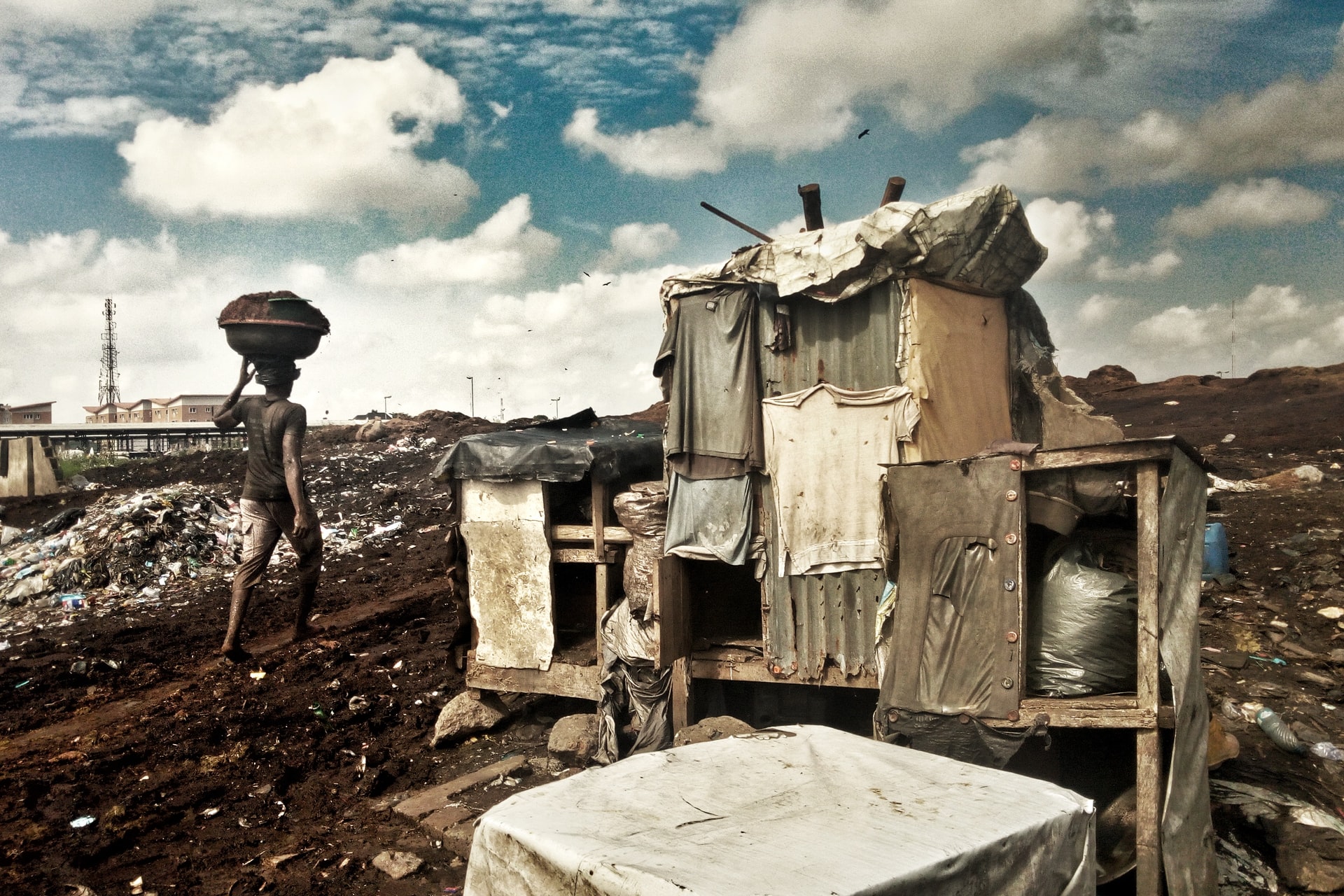
by DGR News Service | Jan 23, 2021 | Human Supremacy
by Cara Judea Alhadeff, PhD
Paintings in this post are by Micaela Amateau Amato from Zazu Dreams: Between the Scarab and the Dung Beetle, A Cautionary Fable for the Anthropocene Era.
The Master’s Tools Will Never Dismantle the Master’s House —Audre Lorde
As with our shift from our systemically racist culture to one rooted in mutual respect for multiplicity and difference, we must practice caution during our transition out of our global petroculture. This vigilance should not be based on the motivation, but on the underlying false assumptions and strategies that perceived sustainability and “alternative” agendas offer. The implicit assumptions embedded in the concept of sustainability maintains the status quo. At this juncture of geopolitical, ecological, social, and corporeal catastrophes, we must critically question clean/green solutions such as the erroneously-named Renewable Energies Revolution. I suggest we face both the roots and the implications of how perceived solutions to our climate crisis, like “renewable” energies, may unintentionally sustain ecological devastation and global wealth inequities, and actually divert us from establishing long-term, regenerative infrastructures.
On the surface, sustainability agendas appear to offer critical shifts toward an ecologically, economically, and ethically sound society, but there is much evidence to prove that #1: these structural changes must be accompanied by a psychological shift in individuals’ behavior to effectively shut down consumer-waste convenience culture; and, #2: the core of too many green/clean solutions is rooted in the very essence of our climate crisis: privatized, industrialized-corporate capitalism. For example, in his The Age of Disinformation1, Eric Cheyfitz alerts us: The Green New Deal is a “capitalist solution to a capitalist problem.” It claims to address the linked oppressions of wealth inequity and climate-crisis, yet its proposed solutions avoid the very roots of each crisis.
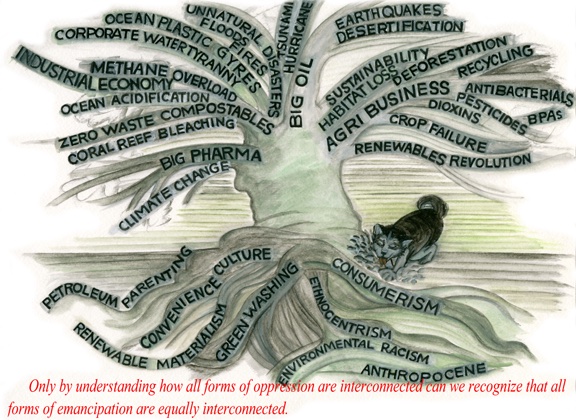
My challenge is rooted in three interrelated inquiries:
- How are our daily choices reinforcing the very racist systems we are questioning or even trying to dismantle?
- How are the alternatives to fossil-fuel economies and environmental racism reinforcing the very systems we are questioning or even trying to dismantle?
- What can we learn from indigenous philosophies and socialist ecofeminist movements in order to establish viable, sustainable, regenerative infrastructures—an Ecozoic Era?
As we transition to supposedly carbon-free electricity, we must be attentive to the ways in which we unconsciously manifest the very racist hegemonies we seek to dislodge; we must be cautious of the greening-of-capitalism that manifests as “green colonialism” through a new dependency on what is falsely identified as “renewable” energies. Currently, human and natural-world habitat destruction are implicit in the mass production and disposal infrastructures of most “renewable energies:” solar, wind, biomass/biofuels, geothermal, ethanol, hydrogen, nuclear, and other ostensible renewables2.
This includes our technocratic petroleum-pharmaceutical addictions that use technologies to create “sustainability.” Even if policy appears to be in alignment with environmental ethics, we are consistently finding that policy change simply replaces one hegemony, one cultural of domination, with another—particularly within the framework of neoliberal globalization. Only when we acknowledge the roots of our Western imperialist crisis, can we begin to decolonize and revitalize all peoples’ livelihoods and their environments.

Zazu Dreams: Between the Scarab and the Dung Beetle, A Cautionary Fable for the Anthropocene Era3, my climate justice book that explores the perils of the Anthropocene, challenges cultural habits deeply embedded in our calamitous trajectory toward global ecological and cultural, ethnic collapse. The book’s main character reflects: “We have this crazy idea that anything ‘green’ is good—but we know that there is no clear-cut good and evil. What happens when the very solution causes more problems than the original problem it was supposed to fix?”
How we measure our ecological footprint4 and global biocapacity is often riddled with paradox—particularly in the face of green colonialism, or what I call humanitarian imperialism5. The litany of our collusion with corporate forms of domination is infinite within the Anthropocene Era (increasingly characterized as the Plasticene). Disinformation campaigns spread by fossil-fuel interests deeply root us in assimilationist consumerism. The Zazu Dreams’ characters witness social and environmental costs of subjugating others through both fossil-fuel-obsessed economies and their “green” replacements. Vaclav Smil warns us of this “Miasma of falsehood.” This implies replacing one destructive socializing norm—petro-pharma cultures sustained by fossil-fuel addicted economics—with another: purportedly “renewable” energies. These energies (I don’t call them renewable, because they are not “renewable” and not carbon-free)6, like fossil-fuels, are rooted in barbaric colonialist extractive industries. Once again, the “solution” is precisely the problem. Greenwashing is a prime example of the ways in which capitalism dictates our alleged freedom. Free market is a euphemism for economic terrorism. The “green economy has come to mean…the wholesale privatization of nature.”7 Consumerism becomes the default for making supposedly ethical choices.
In Deep Green Resistance, Lierre Keith urges us: “We can’t consume our way out of environmental collapse; consumption is the problem”. Even within the 99%, consumers are capitalism. Without convenience-culture/mass consumer-demand, the machine of the profit-driven free market would have to shift gears. We can’t blame oil companies without simultaneously implicating ourselves, holding our consumption-habits equally responsible. How can we insist government and transnational corporations be accountable, when we refuse to curb our buying, using, and disposal habits? We don’t have to go far back in our cross-cultural histories of nonviolent resistance and civil disobedience to learn from world-changing examples of strikes, unions, boycotts, expropriation, infrastructural sabotage, embargoes, and divestment protests.

Yet, most contemporary transition movements are founded in the very system they are trying to dismantle. Our perceived resources, these alternative forms of energy proposed to power our public electrical grids, are misidentified under the misleading misnomers: labels such “renewable”/ “sustainable” / “clean”/ “green”. How is “clean” defined? For whom? There is not a clear division between clean energy and dirty energy/dirty power—clean isn’t always clean. Neoliberal denial of corporeal and global interrelationships instills conformist laws of conduct that continually replenish our toxic soup in which we all live. One perceived solution to help us transition is to create alternatives to fossil fuel-addicted economies, as proposed, for example, through The United States’ proposed Green New Deal and its focus on allegedly “renewable” energies. However well-intentioned, these supposed alternatives perpetuate the violence of wasteful behavior and destructive infrastructures. Even if temporarily abated, they ultimately conserve the original crisis.
Below I address specific technologies that are falsely identified as “renewable” energy; technologies that actually reinforce the very problem they are trying to solve.

1. Solar/Photovoltaic and Wind Technologies: Given the proposed solutions using industrial solar and wind harvesting, Western imperialism has and will continue to dominate global relations. “Clean energy” easily gets soiled when it is implemented on an industrial scale. Western imperialist practices are implicit in solar cell and storage production (mining and other extractive industries) and disposal infrastructures. Congruently, industrial wind farms—aka: “blenders in the sky,”(chopping up migrating birds & bats) use exorbitant resources to produce and implement (both the wind turbines and their infrastructure), and devastate migrating wildlife (bats and birds, critical to healthy ecosystems and some of whom are endangered species).
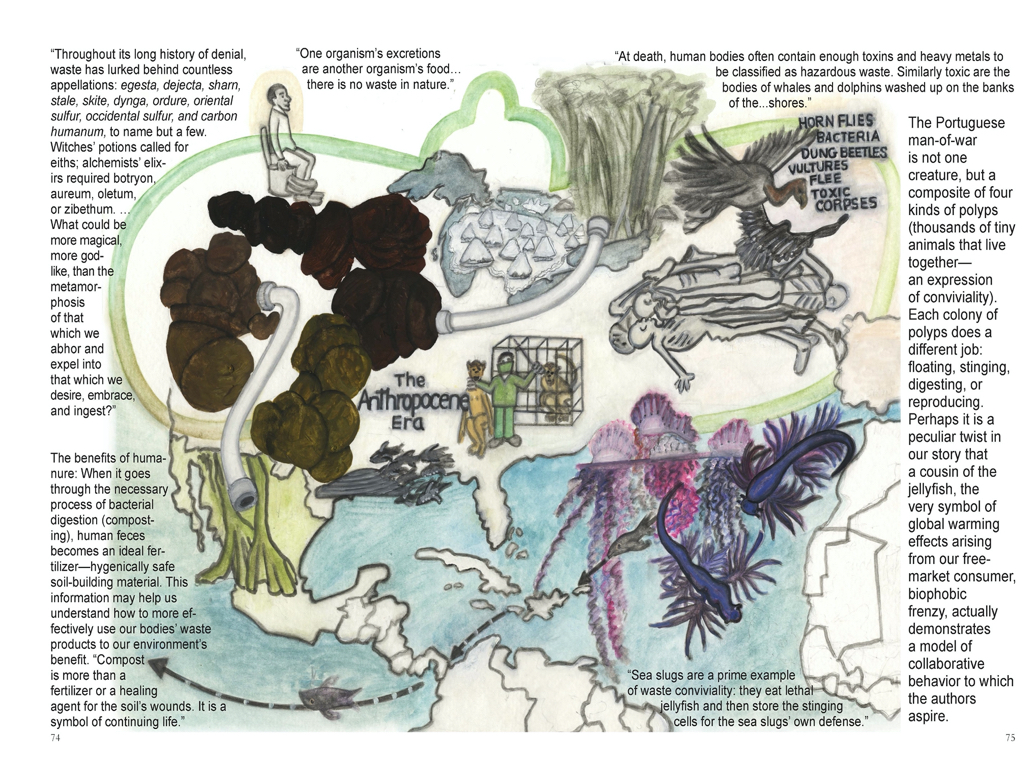
Both wind and solar energies require vast quantities of fossil fuels to implement them on a grand scale. As we have seen throughout both California and China (two examples among too many), massive solar-energy sites/solar industrial complexes strip land bare—displacing human populations and migration routes of both wildlife and people for acres of solar fields, substations, and access roads—all of which require incredibly carbon-intensive concrete. Consuming massive tracts of land, 100-1000 times more land area is required for wind and solar, as well as for biofuel energy production than does fossil-fuel production.
2. Hydro-Power Technology: Large-scale dams for hydro-power have also historically had cataclysmic effects on indigenous peoples and their lands. Although macro-hydro, like fracking, has
finally been recognized for its calamitous consequences, perversely, it is still proposed as a viable alternative to fossil-fuel economies.
3. Battery Technology: Let’s begin with a California-based scenario: According to the Union of Concerned Scientists and their Climate Vulnerability Index (CVI) in California, fine particulate pollution harms African-American communities 43% more than predominantly white communities, Latino 39% more, and Asian-American communities 21% more. As if tailpipe emissions are the only humanitarian catastrophe, one “clean solution” is the electric vehicle for public transportation and for personal consumption. Completely ignoring the embodied energy involved, this perceived solution displaces the costs of environmental racism—once again exported out of the US into the global south—in this case to Boliva where lithium (essential for battery production) is primarily mined. Cobalt, also essential to battery production, is mined in the Democratic Republic of the Congo. Like lithium, cobalt’s environmental and humanitarian costs are unconscionable—including habitat destruction, child slavery, and deaths. Eventually, production is followed by solar technology and battery e-waste dispersed throughout Asia, South America, and Africa. Additionally, rarely considered are the fossil-fuel sources used to supply the electricity for those private and public electric vehicles. And, of course most frequently, the poorest US populations work in and live near those coal mines/power plants/fracking stations.
The Renewable Energies Movement claims that our global addiction to oil (“black gold”) should be replaced by lithium (“white gold”). What we are not considering is that extracting lithium and converting it to a commercially viable form consumes copious quantities of water—drastically depleting availability for indigenous communities and wildlife, and produces toxic waste (that includes an already growing history of chemical leaks poisoning rivers, thus people and other animals). Paul Hawken‘s phrase “renewable materialism” counsels us that this hyper-idealized shift from a fossil-fuel paradigm to “renewable” energies is not a solution. Furthermore, these energies are LOW POWER DENSITY: they produce very little energy in proportion to the energy required to institutionalize them.
As the main character in Zazu Dreams prompts: “Even if we find great alternatives to fossil fuels, what if renewable energies become big business and just maintain our addiction to consumption? (…) Replacing tar sands or oil-drills or coal power plants with megalithic ‘green’ energy is not the solution—it just masks the original problem—confusing ‘freedom’ with free market and free enterprise”. We must now act on our knowledge that the renewable “revolution” is dangerously carbon intensive. And, as the authors of Deep Green Resistance caution us: “The new world of renewables will look exactly like the old in terms of exploitation.”
ENDNOTES
- Eric Cheyfitz, Age of Disinformation: The Collapse of Liberal Democracy in the United States. New York: Routledge, 2017.
- Surrogate band-aids that are frequently equal to or worse than what is being replaced include: bioplastics, phthalates replacements, and HFC’s. 1.Compostable disposables, also known as bioplastics, are most frequently produced from GMO-corn monoculture and “composted” in highly restricted environments that are inaccessible to the general public. Due to corn-crop monoculture practices that are dependent on agribusiness’s heavy use of pesticides and herbicides (for example, Monsanto’s Round-Up/glyphosate), compostable plastics are not a clean solution. Depending on their production practices, avocado pits may be a more sustainable alternative. But, the infrastructure and politics of actually “composting” these products are extraordinarily problematic. These not-so eco-friendly products rarely make it into the high temperatures needed for them to actually decompose. Additionally, their chemical compounds cause extreme damage to water, soil, and wildlife. They cause heavy acidification when they get into the water and eutrophication (lack of oxygen) when they leach nitrogen into the soil. 2.The trend to replace Bisphenol A (BPA) led to even more debilitating phthalates in products. 3.Lastly, we now know that hydrofluorocarbons (HFCs), “ozone-friendly” replacements, are equally environmentally destructive as chlorofluorocarbons (CFCs).
- Cara Judea Alhadeff, Zazu Dreams: Between the Scarab and the Dung Beetle, A Cautionary Fable for the Anthropocene Era. Berlin: Eifrig Publishing, 2017.
- The term “carbon footprint” was actually normalized through shame-propaganda by BP’s advertising campaigns. “The carbon footprint sham: A ‘successful, deceptive’ PR campaign,” Mark Kaufman, https://mashable.com/feature/carbon-footprint-pr-campaign-sham/
- Under the guise of the common good and universal values, humanitarian imperialism has emerged as a neo-colonialist method of reproducing the unquestioned status quo of industrialized, “First World” nations. For a detailed deracination of these fantasies (for example, taken-for-granted concepts of equality, poverty, standard of living), see Wolfgang Sachs’ anthology, The Development Dictionary: A Guide to Knowledge as Power. Although the term humanitarian imperialism is not explicitly used, all of the authors explore the hierarchical, ethnocentric assumptions rooted in development politics and unexamined paradigms of Progress. As public intellectuals committed to the archeology of prohibition and power distribution, we must extend this discussion beyond the context of international development politics and investigate how these normalized tyrannies thrive in our own backyard.
- The air and sun are renewable, but giant wind and solar installations are not.
- Jeff Conant, “The Dark Side of the ‘Green Economy,’” Yes! Magazine, August 2012, 63.
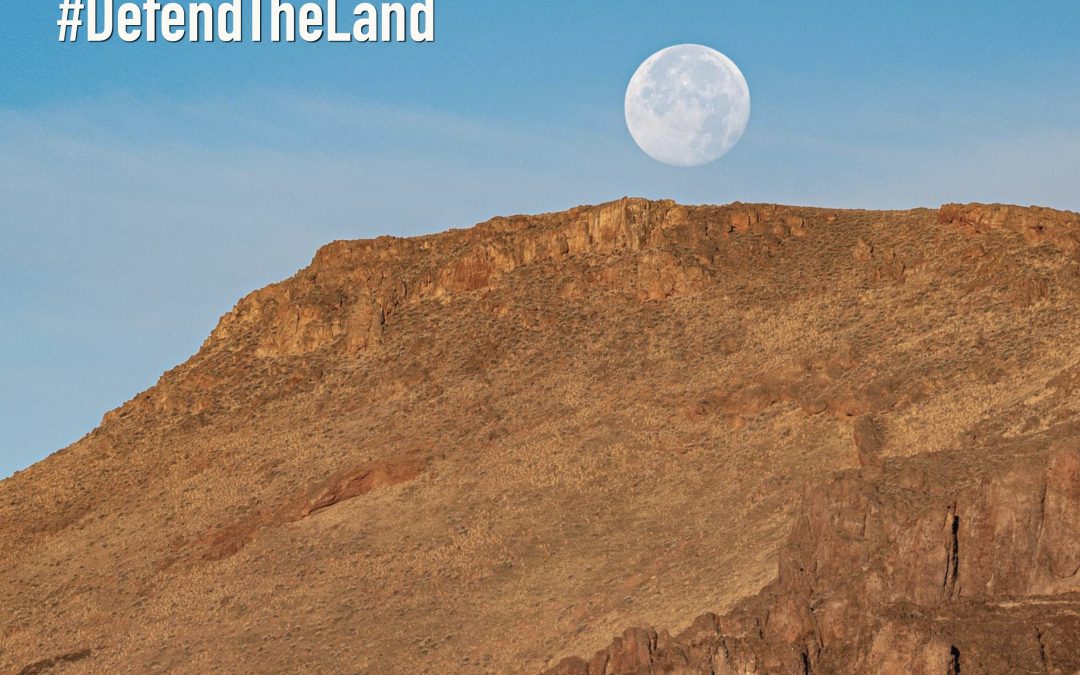
by DGR News Service | Nov 24, 2020 | ANALYSIS, Mining & Drilling
In October, DGR conducted an on-the-ground fact finding mission to the sites of two proposed lithium mines in Nevada. In this article, we look at the facts regarding the plans Lithium Nevada company has for mining and processing lithium (mainly destined for making electric car batteries) in northern Nevada, at Thacker Pass.
The company, now with shares owned by a Chinese mining company, claim their open-pit strip-mine will be a “green mine.” Much of this material comes from Thacker Pass. Special thanks to Aimee Wild for collating this material.
Why Lithium?
Lithium is the lightest metal on the periodic table of the elements. It is cost effective. It is an excellent conductor. Lithium batteries power cell phones, laptops and now cars. The batteries are rechargeable and last longer than other batteries. Lithium is also used in heat-resistant glass, ceramics, aircraft metals, lubrication grease, air treatment systems and some pharmaceuticals.
Interest in the mining of lithium as an important commodity is soaring. Lithium is located in the earth’s crust, oceans, mineral springs and igneous rocks. To be able to extract it economically an area, concentrated lithium is needed, hence the interest in the Nevada site. Thousands and thousands of tons of lithium are extracted, processed, transported and utilized every year.
Thacker Pass Mine
Thacker Pass Mine is owned by Lithium Americas. They have a mining project in South America (The Cauchari-Olaroz Project) which is currently under construction, and of course in Nevada, the proposed Thacker Pass mine. Ganfeng (a chinese based mining company) is one of the largest shareholders of Lithium America. This increases the potential for mining and processing to be shipped overseas.
Local communities have struggled to get to the bottom of the plans for the mines. The brochures are complicated and convoluted. What is clear is that the local people have been chosen as a guinea pig. Most Lithium mines in South America involve pumping saltwater brine on barren salt flats where the lithium slowly floats to the top, is skimmed off, and is then purified for use in batteries.
In Australia they use spodumene ore, which is higher quality than the product Lithium Nevada plans to use. There are concerns linked to how the poorer quality lithium will be processed and the transport of chemicals into the processing areas. There are concerns regarding the transportation of refinery waste by rail cars, and shipping. The plans include transporting waste sulfur, by truck to the mine site, where it will be burned and converted to enormous quantities of Sulfuric Acid on a daily basis. Processing (burning) elemental sulfur, creates sulfur dioxide, sulfur trioxide and ultimately sulfuric acid—all of which are toxic and harmful to life.
Radioactive Waste?
There are concerns that the processing of lithium could ‘accidentally’ expose naturally-occurring uranium. Of course there have been promised by the company to ensure that any radioactive waste will be contained by a “liner.” This seems wholly inadequate when considering there is a water source nearby, and processing plants can have accidental fires or explosion. We know from global disasters (Fukoshima and Chernobyl) that the impact environmental disasters involving radioactive waste can devastate human and non-human communities. Transporting chemicals to or from processing plants increase the risk of accidents, and the smell of sulphur in nearby neighborhoods is likely to be overwhelming at times.
Clarity Needed On The Impact Of Thacker Pass Mine
Opposition to these plans are likely to strengthen when the public understand the plans and the potential impact, and when the information is not shrouded in convoluted documents. In short, the mines almost certainly will be destructive to water fowl, to any life in the rivers and lakes nearby, and impact on the water table.
The air quality is likely to reduce, and the storage and transportation of toxic chemicals increases non-intentional leakage/accidents. If understood correctly the plans to dispose of some waste include a tailing pond, which could contain a) toxic solids, b) harmful discharges c) could impact air quality, and d) could leach into ground water. The mining and processing of lithium is destructive to people, non-human life, the land, the water and the air.
Is It Carbon Neutral?
Burning sulfur does not create carbon, so in that respect the facts are correct. However, as with all green capitalist extraction plans this is a small percentage of the whole picture. The whole picture (or the fact based plans) are obscured with overly complex plans and emperors-new-clothes type scenarios. The process of burning sulfur creates harmful (toxic) chemicals and removes oxygen from the atmosphere.
A conservative estimate is that the processing plant will require over 10,000 gallons of diesel per day to run. In additional to this is the fuel needed to transport the sulfur from the refinery (yes; it comes from an oil refinery) to the mine site. You also have the fuel needed to transport the workers and the electricity needed to keep the plant functioning.
There are concerns that the lithium from this project could be shipped to China for processing in the future. Lithium Americas has been loaned substantial amounts of money from Ganfeng and Bangchak. The Chinese Mining company already own shares in Lithium Nevada and could intentionally own more rights if the loan is not paid back.
So, carbon neutral—no. Friendly to the environment—no. There is not much difference between mountaintop removal coal mining and mountaintop removal lithium mining. Both are exceptionally destructive.
You can read more about lithium mines here: www.portectthackerpass.org. Join our newsletter for more info on lithium mining and greenwashing.











